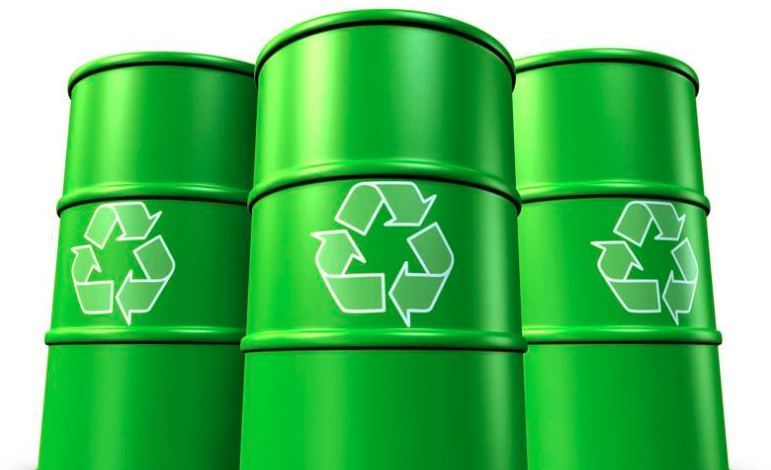Importance of an Oil Recycling Plant

Oil recycling plants play a crucial role in environmental sustainability and resource conservation. These plants are designed to process used oil, removing contaminants and transforming it into reusable products. As industries and transportation systems generate large volumes of used oil, proper recycling is essential to prevent pollution and promote sustainable energy use. This article explores the significance, working principles, benefits, challenges, and future advancements of oil recycling plants.
What Is an Oil Recycling Plant?
An oil recycling plant is a facility that processes used oil, making it suitable for reuse in various applications. These plants use advanced technologies to remove impurities such as dirt, metal particles, water, and chemical contaminants. The refined oil can then be used as lubricants, fuels, or raw materials for other industrial processes.
Used oil is generated from multiple sources, including vehicles, industrial machinery, and power plants. Without proper recycling, this oil can pollute water bodies, harm ecosystems, and contribute to greenhouse gas emissions oil recycling plant help mitigate these risks by ensuring that waste oil is processed efficiently and converted into valuable products.
How an Oil Recycling Plant Works
1. Collection of Used Oil
The first step in an oil recycling plant is the collection of used oil from various sources:
- Automotive repair shops and service centers.
- Factories and industrial facilities.
- Power plants and heavy machinery operations.
- Marine and aviation industries.
Proper collection methods ensure that the oil is stored safely and transported to the recycling facility without causing leaks or contamination.
2. Pre-Treatment and Filtration
Before refining, used oil undergoes pre-treatment to remove large contaminants. The process involves:
- Settling: Letting heavy particles settle at the bottom.
- Filtration: Removing solid debris and sludge using fine filters.
- Dehydration: Eliminating water content to improve refining efficiency.
3. Re-Refining Process
After pre-treatment, the oil is subjected to advanced refining techniques to restore its quality. The primary methods used in an oil recycling plant include:
- Vacuum Distillation: Separating oil fractions based on boiling points.
- Clay Treatment: Using natural or synthetic clay to remove impurities.
- Hydrotreatment: Reacting oil with hydrogen to remove sulfur and stabilize the final product.
4. Blending and Quality Enhancement
Once the oil is refined, it is blended with additives to improve performance. These additives enhance viscosity, oxidation resistance, and longevity, making the oil suitable for various industrial applications.
Read also: Learn About Budget-Friendly Website Options
5. Distribution and Reuse
The final product is tested for quality assurance and then distributed for reuse. Recycled oil can be used in:
- Engine lubrication for vehicles and machinery.
- Industrial applications such as hydraulic systems.
- Power generation and fuel alternatives.
Benefits of an Oil Recycling Plant
1. Environmental Protection
One of the most significant advantages of an oil recycling plant is environmental conservation. Improper disposal of used oil can lead to soil and water contamination. Recycling prevents pollution and ensures that hazardous waste is managed responsibly.
2. Energy Conservation
Recycling oil requires significantly less energy than refining crude oil. This reduces carbon emissions and helps industries lower their overall environmental footprint.
3. Economic Advantages
Establishing an oil recycling plant creates job opportunities and stimulates local economies. Additionally, businesses that use recycled oil can reduce operational costs compared to purchasing new oil.
4. Sustainability and Resource Conservation
Since lubricating oil does not wear out but only gets dirty, it can be cleaned and reused multiple times. This reduces dependency on crude oil extraction, promoting sustainability and resource conservation.
5. Compliance with Environmental Regulations
Many governments have strict regulations regarding waste oil disposal. Oil recycling plants help businesses comply with these laws and avoid penalties by providing proper waste management solutions.
Challenges in Operating an Oil Recycling Plant
Despite the numerous benefits, running an oil recycling plant comes with its own set of challenges:
1. High Initial Investment
Setting up a fully functional oil recycling plant requires substantial capital investment in equipment, infrastructure, and compliance measures. However, long-term benefits outweigh the initial costs.
2. Collection and Transportation Issues
Ensuring a steady supply of used oil can be challenging, as collection points are often scattered across different locations. Efficient logistics and collection strategies are required to streamline operations.
3. Quality Control and Contamination Risks
Used oil may contain a variety of contaminants, including heavy metals, sludge, and chemicals. Maintaining high-quality refining standards is crucial to producing a usable final product.
4. Market Demand for Recycled Oil
Many industries still prefer virgin oil over recycled oil due to misconceptions about quality. Raising awareness about the benefits and efficiency of recycled oil can help increase market acceptance.
5. Strict Environmental Regulations
Oil recycling plants must comply with environmental safety standards and waste management laws. Obtaining permits and ensuring adherence to legal guidelines can be a complex process.
Future Innovations in Oil Recycling Plants
The field of oil recycling is continuously evolving with advancements in technology. Some emerging trends include:
1. Automation and AI Integration
Modern oil recycling plants are incorporating automation and artificial intelligence to improve efficiency. AI-driven sensors can detect contamination levels and optimize the refining process.
2. Eco-Friendly Filtration Techniques
New filtration methods using nanotechnology and bio-based materials are being developed to enhance oil purification without generating hazardous waste.
3. Renewable Energy Integration
Some plants are using renewable energy sources such as solar and wind power to reduce operational costs and environmental impact.
4. Development of Multi-Purpose Recycling Facilities
Future oil recycling plants are expected to process multiple types of waste oil, including engine oil, industrial lubricants, and cooking oil, increasing overall efficiency.
5. Increased Government Incentives
Governments worldwide are offering tax benefits and subsidies to encourage businesses to invest in oil recycling plants. This is expected to drive further growth in the industry.
Conclusion
An oil recycling plant plays a crucial role in environmental protection, resource conservation, and economic growth. By collecting, processing, and refining used oil, these plants help reduce pollution, conserve energy, and create sustainable alternatives to virgin oil. Although challenges such as high investment costs and market acceptance exist, technological advancements and increased awareness are paving the way for a more sustainable future. As industries and governments continue to support oil recycling initiatives, the global impact of these plants will only grow stronger.




